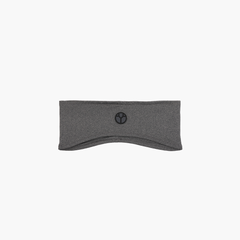I had first seen a photo of the route Oma Rapeti (Run Rabbit in Maori) on Mt Huxley’s West Face after climbing Weta Prowl on Steeple Peak. Mt Huxley is the tallest peak in the Huxley Range, and at a whisker over 2500m it stands proudly among the heavy hitters that are scattered throughout the Ohau Ranges. Right on the Main Divide, Huxley boasts serious relief on its Western aspects. 800m from its old glacial runout to the summit. The West Face is a 500m expanse of mostly solid greywacke. Large ribs of rock sit astride a precarious serac at half height. It is the size of a small supermarket and causes serious to concern to those in its vicinity. It is on this Western face that Oma Rapeti lies. First climbed by Steven Fortune and Kieran Parsons in the summer of 2016, it is a direct line up the left hand rib.

After returning from a trip to climb Weta Prowl and Butterfly Buttress I was eager to learn the name of the peak that sat to the west with great snowfields draped over its eastern shoulders. The name was Huxley and it had a starred Grade 5 on its Western face. Not only that, but it had a photo of the first ascensionists climbing “splitter cracks” high up on the route. My nostalgic mind was already tying the greatness of Frog Buttress in Australia (crack climbing paradise) into the vision of climbing a long, committing rock route in a remote corner of the Southern Alps.
I had brought up my desire to climb this route to a couple of my partners in recent months. I was eager to go and see whether this route lived up to the insane hype that I had created for it with one photo in the guidebook. After Oliver and I returned from Aoraki NP early, we felt we had another trip in the mind and the legs. I mentioned Huxley, and he asked how I had planned to approach it. I said something along the lines of “well, up the South Huxley or South Temple obviously”.. (der!). Oliver scoffed and said “Why would you do that? Go up the Ahuriri”. After a quick glance at the topo map on my phone, I asked, and you can mountain bike up most of the way as well? It was too good to be true. This had changed my scope for the route completely. A leisurely approach up the Ahuriri with barely 400m vert and 10 kilometres of hiking to a campsite within shouting distance of the west face. Lets go!
Day 1:
Birchwood Road is 40km of gravel road lined, mainly with paddocks, but also the odd random mansion, secluded lodge, and fishing spots galore. The trusty ’89 Datsun deposited us a mere 20km from our intended campsite. Ditching the bikes in a bush near Hagens Hut, we began the final stage of our approach. The weather was damp, cloudy and forlorn. Our boots were wet before long and we resigned ourselves to wet feet again.. It felt like we had just finally got them dry after the previous trip. Next time I must bring sandals…
We made slow progress up the braided river. Oliver was over on the true right, playing his own version of mental gymnastics. I was on the true left weaving back and forth, hoping that my indecisive track would reveal a hiking super highway. Alas, it was not to be. After what seemed like a long day, we arrived at Top Hut and were tempted by the thought of a fire and a midgy free bed for the night.. Maybe we could do the route in a day from Top Hut like Glen and his mates did? Surely we could if they could. Better judgement prevailed. We had the whole afternoon. May as well walk-up the valley a little further. Better to stage close on a long route. You can lose precious hours on the approach. We had a bite to eat and left our intentions amongst some very interesting entries. Shouldering our packs, we squelched on. The clouds sunk low, like our moods. We passed a NIWA monitoring and somehow the conversation it evoked spurred us on with renewed vigour. It was only another 90 mins up the river, then we could settle in for the night.
I was ahead of Oliver by a few minutes at this stage and stumbled upon a flat tussocky area, sprinkled with boulders large and small. There was one very obvious spot that would take a tent perfectly. Before long we had the tent set up and our bags prepared for the next day. We lay in the little warmth that dusk provided and plotted our strategy for the next day. The clouds were lifting, and I lay in my sleeping bag, warm and with a full belly, I felt tomorrow was going to be just the right amount of challenge.

Day 2:
We stirred to the sound of our 4am alarm. We looked outside, and agreed (mistakenly) that we should stay in bed until 6am and if its still cloudy we will just start and see what happens. At 0545 we grew restless. We got dressed, put our boots on, and followed the stream into the cloud. Thankfully with the short periods of visibility that we were granted at dusk we knew that if we followed the snow melt it would take us up to the base of the mountain proper. Where we had camped to the base of the climb was about 700m elevation gain. We had to either climb a snow couloir or easy slabs to get the start of the route. We figured at the top of this stream we would be able to choose where to go next. We got into a rhythm and after 1 hour we had gained 400m elevation and were able to refill our water bottles and have a snack. We had actually been walking through inversion cloud (hence the mistakenly earlier), and so should have just woken at 4am and got an earlier start on the route. In the end, this judgement error didn’t cost us the route, but it could have.
We continued up to the base of the route. Oliver regretted bringing his aluminium crampons as he made his way tentatively up the last 100m on a steep, firm snow slope. Rockfall had begun to tumble the slabs to our left. The had sun started to hit the tops of the ridges and bathe the Eastern aspects of Chosspile Peaks with a morning glow. I found what I believed to be the start of the route and we racked up. I suggested I take the first leads to get us established in a good crack system and Oliver was more than happy to oblige.
I started up a steep chimney which required grunty stemming above a good placement, in a not so good piece of rock. A few moves on jugs and I was on a good belay ledge. I brought up Oliver and pointed gleefully above. A lovely layback crack. Above I could see good rock and many cracks and fissures to choose from. I said to Oliver that I'll lead this one as well. We re-flaked the rope and I set off. Great moves up the layback on bomber gear, mantelshelf out of the corner and a few scrambly moves later and I was bringing Oliver up. I passed Oliver the rack and said “Your lead. Time to get in the game”. The next pitch looked straight up but the difficulties were not clear from our belay.
Oliver did well on this next pitch. Exposed moves on arete, led to a section of steep flakes that sounded hollow and when you hung on them, felt as if you were hanging out into space. The exposure so early only on the route was insane. We topped out this pitch and saw glaring down on us from above, an overhanging serac. We knew the line moved left of these hanging snow formation, but we didn’t realise the ring climbed directly adjacent to it for the whole first half of the route. Although we were moving well and transition efficiently, we knew this was no time to rest. We had to get above or well to the side of this serac as soon as we could. I grabbed the remainder of the gear and headed up a full rope length. Scrambling over rubbly shelves and placing only 3 bits of gear in the whole pitch, I was relieved to find a solid belay. The next pitches looked tricky again, but Oliver rose to the occasion and climbed a run out section of face climbing before tackling a grade 17 off-width crack (that fortunately I had brought big enough cams for). It climbed easier than it looked, but still required a level head. Oliver brought me up to a good belay, but being quite a small stance, I moved on quickly.
I placed two bits of gear and climbed the few metres to a ledge. I whacked in a good piton, threw on a micro-traxion and then made myself small and scarce, as I darted over the ledges, and out of the firing line. I climbed up for another 20m and put in a belay. Oliver was quick to join me, especially when he arrived at the piton and looked up above his head.. Neither Oliver or I are going to be setting our sights on the Caroline face anytime soon. Seracs are proper spooky!
We decided with a sign of relief that this would be a good chance to let our feet rest, eat some food, and re-hydrate properly
From the serac pitch, I moved our belay up about 100m in a long pitch of simul climbing. I then gave the lead back to Oliver just below the large upper slabs. We were getting close, but I knew challenges still awaited us in these final pitches. Oliver led up an easy pitch to the base of the slabs. When I arrived at Oliver’s belay I poked my head over and around the arete and had a good look up the slabs. There were no splitter cracks yet! It was blank and looked more like a hard sport climb then a moderate well-protected trad climb.
I sidestepped around Oliver and left the belay, leading up a pitch of face climbing, easily protected by a consistent crack in the corner to my left. Most holds had to be subjected to interrogation before you relied on them, and although the climbing was physically easy, it took time to tentatively pick a path upwards. I was relieved when I pulled onto the next rubbly as the last few metres had been run out above cams that were well placed but in questionable rock.
Oliver’s next pitch was a tricky ramp pitch that finished with an awkward and physical move up and over a short, steep wall. It was somewhat loose and hard to protect. I knew now that it was going to be up to me to unlock these slabs. I am comfortable climbing cracks up to Grade 20 and so felt if these were moderate and “splitter” I would be able to dispatch them in no time at all.
Much to my dejection the splitter cracks were not splitter and were in fact, rather variable in size and consistency. Some would peter out behind flakes of exfoliating greywacke. In other moments, the cracks would disappear, and reappear a few metres on. The final trick was that they were filled with rubble, and apart from a few sections of nice clean hand jamming, I was forced to clean them out whilst smearing onto the slabs either, and hoping a good hold or two were on the edges of the crack. Most of the time the cracks were flared at the back and so placements weren’t as good as they looked from far. By the time we reached these golden slabs of greywacke we were about 2 full rope lengths from topping out. These two pitches of crack/slab climbing were time consuming and tiring for my already fatigued feet. After two pitches I slammed in a shifty belay relying heavily on a small, but bomber knife blade placement. Oliver came up. Seeing the final moves to the belay he was grateful yet impressed, the final 5 metres required traversing with your feet in finger wide crack whilst your feet could only smear below. We quickly transitioned and I moved gleefully up the final 20m to the top of the route. My body felt light, and my mind was soaring as I stood up, and away form the steep ground that had consumed me for the past 12 hours.
I was greeted with expansive views to the North, past Protuberance Peak, Mt Ward, Mt Hopkins and the giant, sky-piercing hulks of Sefton and Aoraki. I yelled out to Oliver that we had done it! I slammed in a t-slot with our snow stake and told Oliver to hurry on up, teasing him the whole way up those last few metres, about just how close he was to the top.
We exchanged congratulations and took a few moments to take in the sights and feel the satisfaction of the climb. We ate some food, drank some water, packed up our gear, and put our mountains boots and crampons on.
It was 2030 and we had been on the go for 14.5 hours already. The descent would be relatively easy, but after our pit stop, we were both eager to find a way through the bluffs that we knew awaited us a few hundred vertical metres below the summit.
We made quick progress across Huxley’s Northern snow-covered summit slopes, and happily digested the amazing view around us. The evening light cast its glowing colours on the surrounding peaks, as the shadows grew upwards from the valleys below. Thankfully the route down through the bluffs was easy to locate, and all that was required was careful movement on the rubble strewn ledges, and grassy slopes. Once again the chamois, with their droppings and hoof marks, were showing us the way down with typical route-finding prowess.
After a couple of hours, and just after our headtorches had become necessary we sat down next to a trickle of snow melt and had a brew up. We had each brought a dehydrated meal for this exact occasion. Tired, been a long day, the sleeping bag seems a long way off.. Its nice to have a supper and a normal hour. It helps the body and mind stay switched on. Taking adequate rests during long days in the hills is something I have learnt to value more and more. Fatigue makes quitters of us all, and having good breaks, and eating/drinking enough goes a long way in combating this desire to just stop where you are and go to sleep.
Day 3:
It arrived with a glance at my watch. My brain was still alert and awake, and my legs had given up their protests in these situations many years ago. We were only an hour or so easy travel down scree to camp. We dropped vert in a semi-stoked, semi-tired daze, chatting casually about random topics and wondering why there were seagulls this far up the Ahuriri. Arriving back to camp at 0130, we had left 20 hours previously.
We gratefully removed our sodden mountain boots, razed hungrily on our good snacks, and before long were sliding into our sleeping bags, eager for rest.
We awoke groggily at 0900, and broke camp. We weren’t rushed but we got on with the day. Starting off down the valley, with Huxley in our rear view, we were elated with our efforts from the previous day. We felt we had challenged ourselves just the right amount. Unfortunately, the cracks weren’t that splitter, but the experience was hugely satisfying, maybe next time we come up this valley we will be chasing soft snow or cold, thick ice..
It was a warm day, and the sun warmed us and we criss-crossed back down the Ahuriri river. I was glad to get back to the 4WD and soak my legs in a cold side stream. We toasted an early afternoon beer and loaded up into the 4WD. I felt ready to do some local cragging and give the legs and mind a break. The mountains I climb provide a lot, but it is by no means given freely. One must earn this form of enlightenment, just like any other form. Mountaineering is paid for with physical and mental exertion, the suppression of fear, and a lot of the time, simple stubbornness.

Words by: Adam Sanders
Images by:








Leave a comment